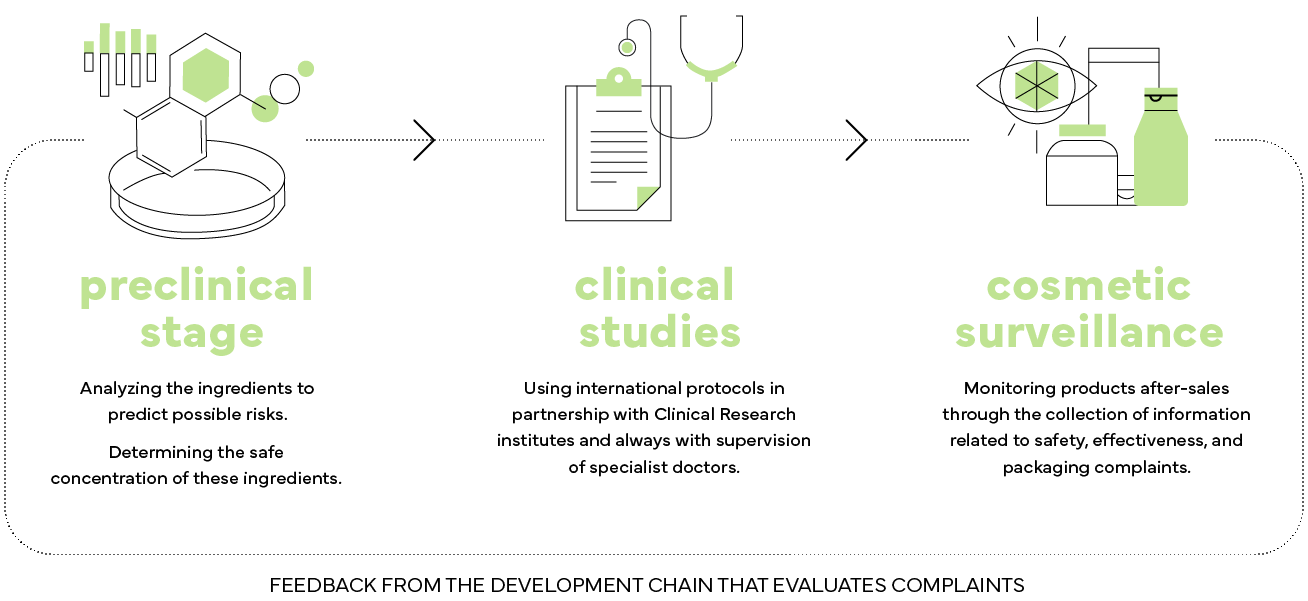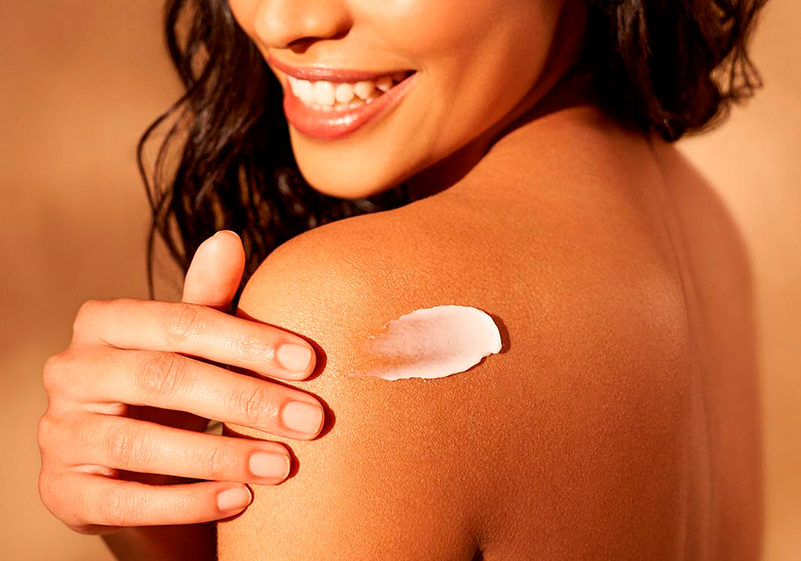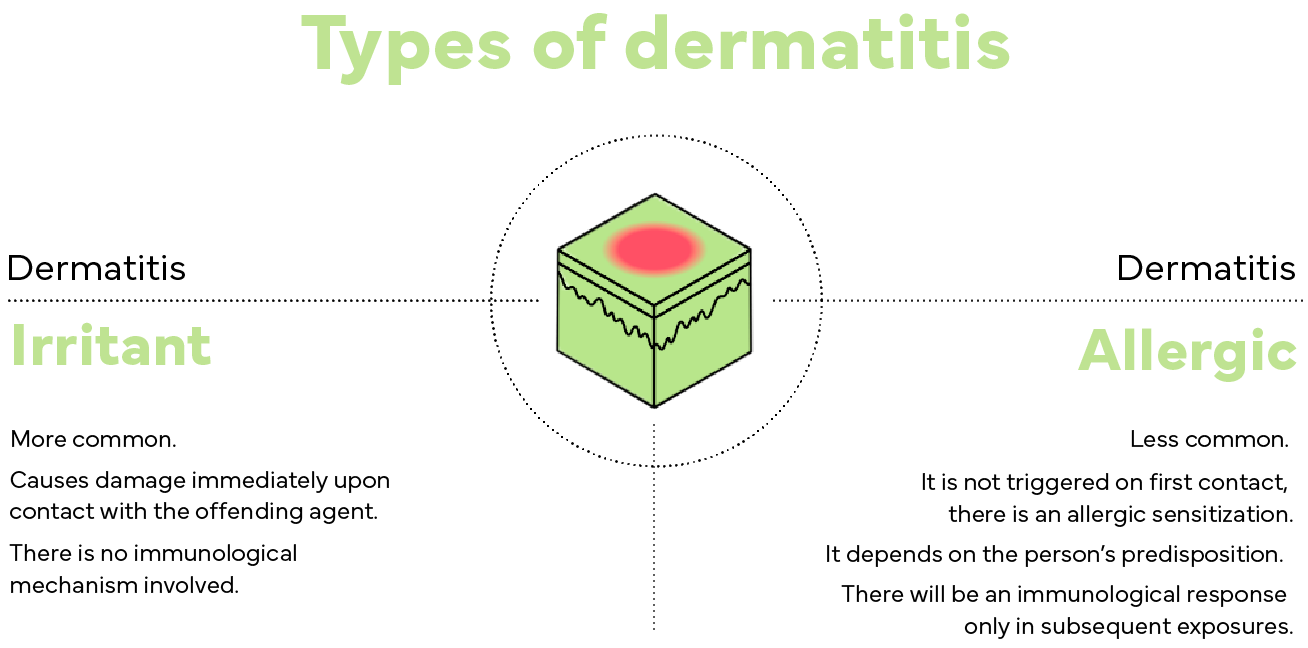Product safety

Besides the recognized quality and safety, Boticário Group products are committed to offering total safety to their consumers through their products.
In our laboratories, multidisciplinary teams follow national and international standards to guarantee our cosmetics’ quality and safety. We have increased the levels of protection recommended by legislation, ensuring even more safety in the use of your cosmetics.
safety steps
Check out the steps to ensure the safety of your cosmetic:

1. Preclinical
We begin our safety assessment in the preclinical phase.
In this step, scientists analyze toxicological data and chemical structure of ingredients assisted by databases and computational tools (in silico) to predict possible health risks. After this step, if necessary, in vitro studies are conducted to confirm safety and/or determine the safe concentration of ingredients by type of product and target audience.
WE START WITH:

The choice of each raw material that will be part of the formulation

A thorough toxicological analysis

Impurity limits

Definition of use concentrations
2. Clinical Studies
Product safety assurance is performed at this phase. We rely on the most advanced international protocols in partnership with clinical research institutes. In order to guarantee safety, we are always assisted by doctors, such as dermatologists, pediatricians and/or ophthalmologists. Boticário Group exports its products to several countries and, therefore, we are always aligned with international governmental and scientific bodies who issue opinions on the safety of the ingredients and whether they comply with these regulations. Therefore, you can be sure: all our products from all our own brands have gone through a rigorous and total safety assessment and can be used with maximum confidence.
3. Cosmetovigilance
Our post-sales product monitoring is performed using a system called Cosmetovigilance. Cosmetovigilance allows determining the acceptable profile of product complaints after they are introduced into the market. This collection of information and analysis of product data on the market is related to complaints about: Safety, Efficacy and Packaging. Post-sales data help us feedback the development chain that assesses whether the quantity (number of complaints) and quality (profile and severity of complaints) are within the expected for that particular product. This number and profile vary greatly according to the product and can be influenced by several factors, such as target audience, sales volume, form of use, product category, etc. Based on this information, we can further improve the performance of our products and refine future launches.
products for babies and children
The development of formulas that will be used on more sensitive skin, like babies and children’s, involves special concerns. Following our protocols, we guarantee safe and quality products.
Therefore, always keep an eye on the instructions on your product label.
Formula
The selected ingredients undergo prior evaluation by our toxicologists to ensure a safe product. We analyze the formulation predicting frequency and mode of use. We calculate the margin of safety (MoS), which is always different for children.
What is the margin of safety calculation?
It is a mathematical calculation established by international organizations that aims to guarantee the safety of substances in the concentrations applied, considering the intended use of the product and the indicated age range.
Fragrance
The choice of fragrance follows strict safety standards from the International Fragrance Association (IFRA). In addition, it follows a Fragrance Development Guide with specific premises for this public according to the age group, and it is more restricted for children up to three years old and hypoallergenic products which have restrictions on the use of substances with recognized allergenic potential. After this preclinical analysis, we move on to the final phase of the development process: our clinical tests.
Tests
These tests are conducted according to the type of product, following advanced international protocols and in partnership with clinical research institutes, always assisted by doctors, such as dermatologists, pediatricians and/or ophthalmologists. First, clinical tests are performed on adults and then are tested on children.
These steps are necessary to confirm the safety of the formula. Subsequently, we continue to closely monitor our products on the market so that we can improve their performance and refine future product launches.
All these procedures are conducted to ensure consumer safety.
sensitive skin
People with this type of skin have greater susceptibility to adverse reactions, and these reactions can be severe. Therefore, it is important to use products that are suitable for this type of skin. We know that sensitive skin has specific needs, as it has more “reactivity” to environmental factors or products such as cosmetic, and symptoms like itching, stinging, burning, among others, are manifested.

hypoallergenic
Hypoallergenic products are those whose low allergenic potential is recognized and demonstrably reduced when compared to other similar products. These products are used by consumers who are predisposed to allergic reactions, since they better accept products whose formula does not include substances that commonly cause these problems.
The choice of fragrance that will be used for these specific public also follows strict global safety standards of the International Fragrance Association (IFRA) and the Fragrance Development Guide with specific premises for sensitive skin and hypoallergenic products, which are more restricted for this public.
Our hypoallergenic and sensitive skin products are
indicated on the product labeling.
allergy, irritation and intolerances
What is allergy?
Regarding skin, allergies are reactions resulting from skin exposure to some external agent
(like ingredients contained in products) and are called contact dermatitis.
Cosmetic products can sometimes cause allergic reactions, particularly what is known as irritant contact dermatitis. These reactions are rare and usually stop when the use of the product is interrupted.
These reactions can be classified as:

Irritant contact dermatitis
This is the most common skin allergy and is characterized by skin damage immediately after contact with the offending agent, causing an inflammatory reaction with signs of redness, itching and a burning sensation. The skin of atopic individuals (who have skin inflammation, leading to the appearance of lesions and itching) is more likely to present this type of dermatitis. There is no immunological mechanism involved.
Allergic contact dermatitis
It is less common and does not depend on the irritating action of the product on the skin, but on individual predisposition. The process is triggered throughout exposure to the product, that is, it does not appear on the first use.
Allergy, irritation and intolerances:
Listen to the podcast with dermatologist Dr. Monique Souza

allergens
Allergens are substances that are known to have a higher potential to cause allergies in sensitive individuals. They can be found naturally in the environment and in certain foods, such as dust mites, seafood, and nuts like peanuts. In cosmetics, allergens are predominantly present in fragrances, but can also be found in other raw materials, such as dyes, and in various other ingredients.
Cosmetics are subject to strict regulations, and their safety levels are extensively studied and established. Aiming at consumer transparency and safety, health authorities decided that if these substances are present in cosmetic products at a concentration exceeding 0.01% for rinse-off products and 0.001% for leave-on products, they must be indicated on the label. This indication on product labels is important to facilitate the recognition of the presence of these substances that have a higher potential to cause allergic reactions. Some examples of allergens that can be found on cosmetic labels are: citral, linalool, and limonene.
